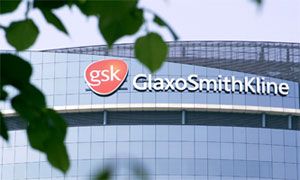FDA Grants Breakthrough Therapy Designation for Eltrombopag for SAA
The FDA has granted a Breakthrough Therapy designation for the small molecule thrombopoietin receptor (TPOR) agonist eltrombopag (Promacta) for the treatment of cytopenias in patients with severe aplastic anemia (SAA) who have had insufficient response to immunosuppressive therapy.

The FDA has granted a Breakthrough Therapy designation for the small molecule thrombopoietin receptor (TPOR) agonist eltrombopag (Promacta) for the treatment of cytopenias in patients with severe aplastic anemia (SAA) who have had insufficient response to immunosuppressive therapy.
The Breakthrough Therapy designation was designed to accelerate the approval of treatments for life-threatening conditions. At this point, few options exist for patients with SAA who do not respond to immunosuppressive regimens or transplantation. For patients with refractory SAA, severe cytopenia increases the risk of dying from infection, the development of secondary hematologic disorders, and requires constant transfusions.
“Promacta continues to be the basis of groundbreaking and promising science in important areas with significant unmet medical needs,” said John Higgins, President and CEO of Ligand, the company that codeveloped the drug with GlaxoSmithKline. “We congratulate the global Promacta/Revolade development team at GSK, and commend them for their continued scientific and regulatory progress.”
The Breakthrough Therapy designation was based on results from a phase II trial that have not been released. Results from the trial are expected in December 2015.
In phase II study, treatment with eltrombopag was explored in 43 heavily pretreated patients with SAA. Treatment was administered for 24 weeks prior to definitive response assessment. Eltrombopag was administered at a fixed initial dose of 150 mg/day (75 mg/day for individuals of East Asian ethnicity). This dose was established in a pilot study that enrolled 25 patients with SAA.
In the pilot study, 44% patients with SAA who had refractory thrombocytopenia following standard immunosuppressive therapy achieved a hematologic response when treated with eltrombopag for 12 weeks. Responding patients continued to receive the drug in an expansion trial.
For patients in the expansion trial, after a median of 27 months, 7 patients experienced a complete, trilineage response. In total, 9 patients were transfusion-independent for platelets (median increase in platelet count 34,000/micro l), 6 patients had improved hemoglobin levels (median increase of 3.8g/dL), 3 patients who were previously dependent on red cell transfusions achieved transfusion-independence, and 8 patients exhibited increased neutrophil counts (median increase 590 cells/micro L).